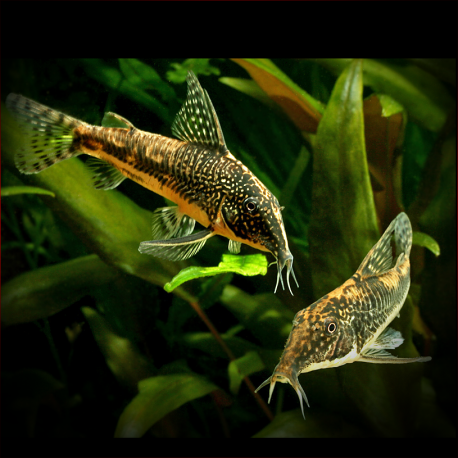More info
Datasheet
| Minimum Tank Size | 270 litres / 71.33 US gallons |
| Maximum Size | 10.0cm / 3.94inches |
| Temperature | 16°C / 60.80°F - 24°C / 75.20°F |
| Hardness | 1.01dgH / 18ppm - 12.05dgH / 215ppm |
| pH | 5.5-7.5 |
Behaviour
Males of the Scleromystax Barbatus are known to be aggressively territorial towards each other and should not be housed together in smaller aquarium setups. Despite their territorial behavior, these fish are generally peaceful when kept in appropriate conditions. The fish may exhibit darting behavior and occasional gulps of air from the water's surface, a trait believed to help them survive in poorly-oxygenated environments during natural conditions.
Feeding and Diet
Scleromystax Barbatus are foraging omnivores that readily accept sinking dried foods, along with small live and frozen varieties such as bloodworms and Tubifex. To ensure optimal health, a varied diet is recommended rather than relying on leftovers from other tank inhabitants. It is crucial not to expect these fish to solely rely on scavenging for food in the aquarium or to act as "cleaners" of the tank.
Reproduction & Dimorphism
Breeding Scleromystax Barbatus can be achieved by maintaining a single male per female in the aquarium to avoid aggression between rival males. When ready to spawn, females should be provided with cooler water and increased oxygenation. The eggs may be laid on various surfaces, including the glass of the aquarium, fine-leaved vegetation, or sunken spawning mops. Male fish can be distinguished by a white/gold stripe against the black forehead, a more defined spotted head pattern, and bristles resembling a beard, while females have a rounder body shape, especially during breeding periods, and tend to be slightly larger.
Habitat and Distribution
Indigenous to freshwater habitats in small flowing tributary streams and still ponds with sandy or fine pebbled substrates, the Scleromystax Barbatus is typically found in coastal tributaries such as the rios Guapi, Capivari, and Inbomirim in southeastern Brazil. The fish prefers areas covered with mud and where water flows steadily, reflecting its natural habitat in the wild.

